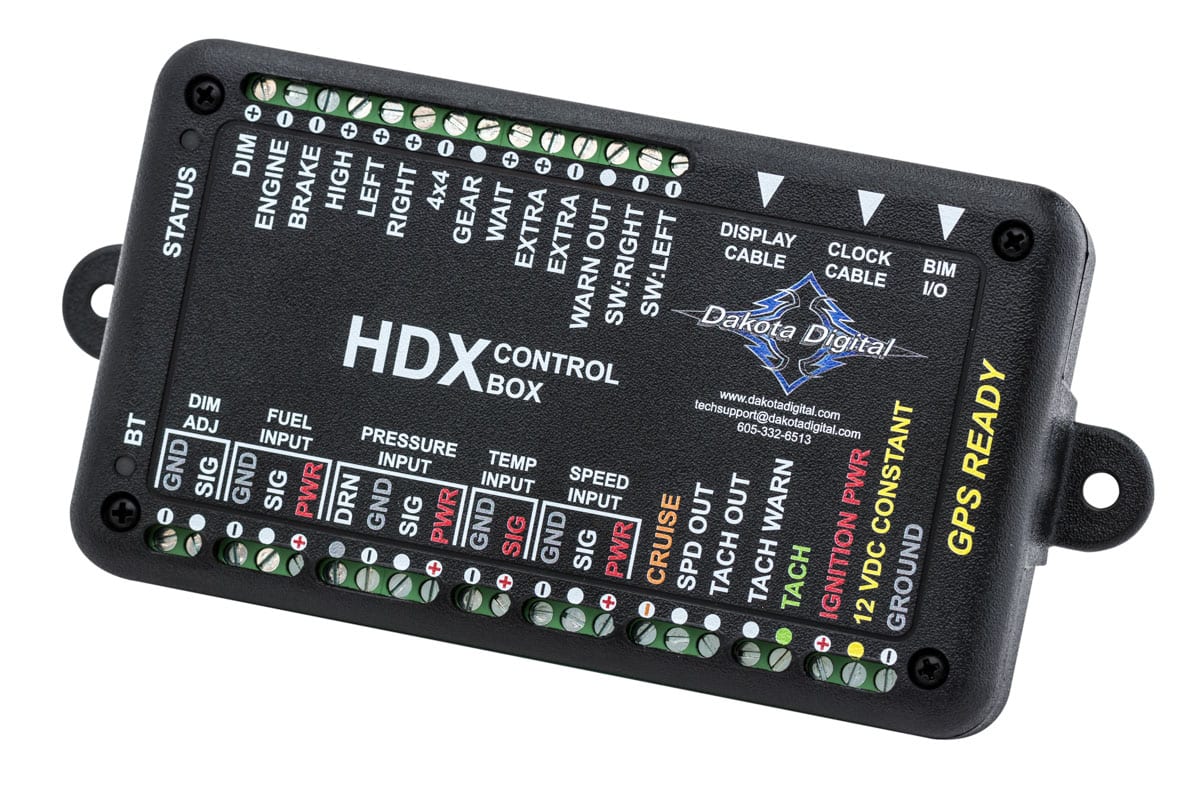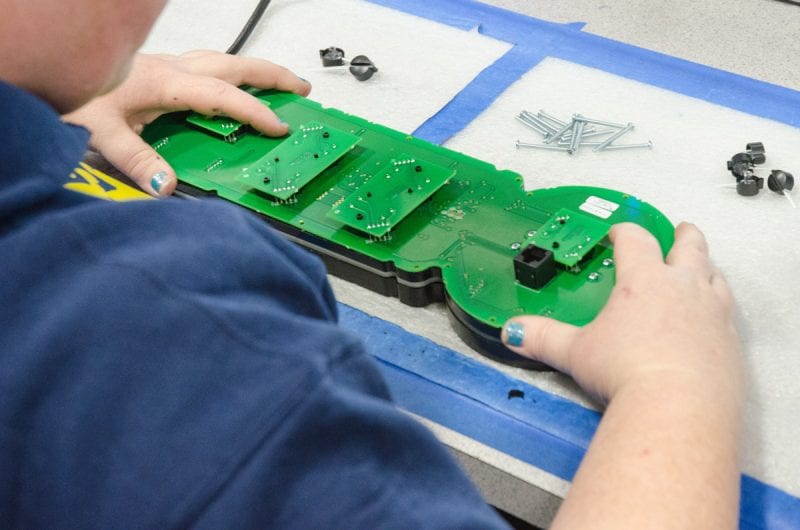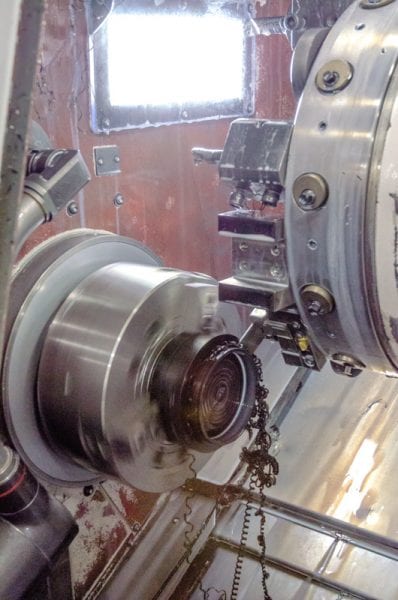Dakota Digital Gauges – Three Decades of Digitation
If you’ve been around the hot rod world over the last 30 years, chances are you’ve heard of Dakota Digital. Those digital dashes with a blue glow can be seen inside cool cars at events from coast to coast as well as around the globe. What you may not know is the breadth and depth of their product line, or that everything gets done under one roof.

A college thesis paper gone out of control, Dakota Digital spawned from a rural South Dakota basement back in the mid-1980s. As word got around about the high-tech digital displays for vintage cars, demand grew. From the basement to the garage, then into a dedicated facility followed by a much larger building, founder Ross Ortman stood at the helm of his ever rising company, adding features and applications along with new manufacturing equipment. Fast forward 31 years, and Dakota Digital is a thriving company with 84 full time employees filling a 45,000 square foot facility to the brim.

From inception to finished product, nearly every process is handled in house. A team of mechanical engineers design instrument systems, such as the new HDX series, based on stock clusters. Using dash parts sourced from swap meets, salvage yards or online, the OEM components are drawn in CAD to determine how modern tech can fit within vintage confines. Across the room, electrical engineers design software and hardware components to fit the new designs and deliver the latest in features. Before the first aluminum chip is sent flying, a rapid prototype machine, also known as a 3D printer, is pressed into service to create a life-size model of each part. The accuracy of these models is remarkable; they can be assembled with boards and lenses to be installed into a dashboard to check fitment.

The in-house machine shop filled with CNC machines turns the CAD files into reality, using a variety of materials and equipment. Most parts are carved from solid blocks of HDPE or aluminum, while clear acrylic is cut out on a CNC router for HDX lenses. Lathes turn out gauge bezels while vertical and horizontal mills create housings and lens spacers, and there’s even a vacuum former to create many of the rear panels that allow the instrument system to be a sealed unit.

Large SMT machines populate circuit boards at a lightning-quick pace. Larger components are positioned by hand, then robotically soldered. With all the components in place, the boards are tested to ensure all features are functioning properly; proprietary software runs the system through its paces, testing the backlighting functions for brightness and color spectrum, the TFT message centers for response, along with the precision stepper motors for accurate movement. One of the more subtle features of the HDX series are the integrated capacitive-touch programming switches. These small buttons poke through the lens of each system allowing the user to access the setup menu, including calibration of the speedometer, lighting intensity, as well as illumination colors.

In addition to the circuit boards, displays and stepper motors in the instrument system “head” there is plenty happening in the control box. All wiring connections are made at the control box, rather than the instruments themselves. A central control unit offers multiple benefits, such as easier, faster installation, fewer wires under the dash and less connections to be made. The control box also offers added space for more technology and hardware; Dakota Digital gauges can “do” more within a stock instrument housing than one might think. Additionally, these instrument systems are expandable, with OBD-II/CAN integration and added modules for auxiliary readings.
While the electronics are coming together, the overlays, or gauge faces, are being brought to life in another area of the building. Using files drawn by the engineering department, large printers lay ink onto the overlay material. This process allows for some pretty trick features offered in the HDX series, such as hidden indicators; you won’t see your high beam or turn signals until you want to! Black or silver are the standard color options for the overlays, but custom colors can be had upon request. Customers typically send a paint or upholstery sample for color-matching.

The final steps of assembly are the most exciting and rewarding, as the pile of components merge together to create a finished product. The assembled circuit boards are placed into their housings, followed by the programming switches, scratch-resistant lens, and when applicable, the chrome front bezel. From there, systems are run through a final test procedure, packaged and shipped out and into the eager hands of a hot rodder just itching for this tech-filled upgrade.

The HDX series of Dakota Digital gauges offers more user-adjustability and customization than anything seen in the aftermarket before. Over 30 backlighting colors can be mixed and matched; you want yellow needles over white gauges with pink numbers in the message center? Have at it! Set different brightness and color combos for day and night modes, and dial it all in with the built in switches or the Bluetooth app. That’s right, you can manipulate all calibration settings, lighting preferences, set warning points and more from your Apple or Android device of choice. All HDX systems have Bluetooth functionality, making setup and customization an absolute breeze; beats the heck out of flipping DIP-switches while standing on your head! There’s even a buzzer that adds audio feedback to the instruments. It can be set to coincide with the built-in warning lights for each reading, and even let you know you left your blinker on!

It’s safe to say that after 30-plus years with their nose to the grindstone, Dakota Digital has a pretty good handle on American made automotive electronics. Sticking to a few basic principles; bringing as many processes in-house as possible, striving to create outstanding, award-winning products which deliver the features and style customers want, and backing them with a lifetime warranty, has worked well in making Dakota Digital a household name. Never ones to rest on their laurels, you can bet this team is still pedal to the metal up there in The Rushmore State.

Story and photos courtesy of Dakota Digital











